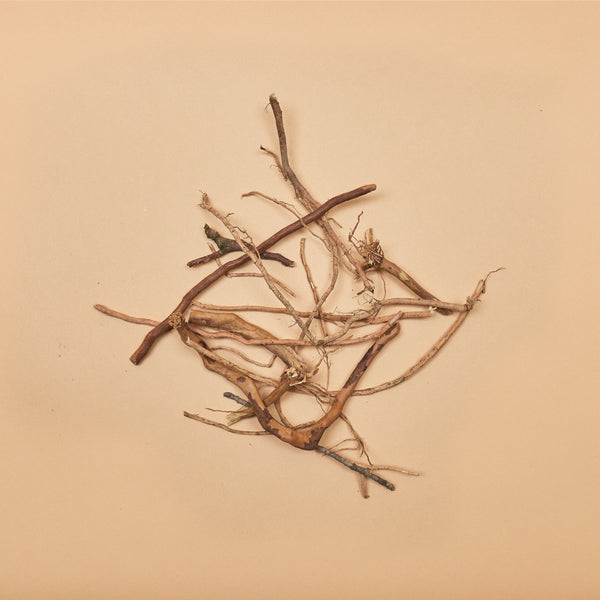- Continue Shopping
- Your Cart is Empty
Ichnocarpus Bark (25 pcs)
Sold Out
The bark and twigs of Ichnocarpus frutescens from India is an interesting, functionally aesthetic botanical material ideal for all sorts of applications! Long known for it's medicinal properties, Ichnocarpus has been studied extensively by science for pharmacological applications. Phytochemical investigations indicate that the plant contains valuable compounds, such as phytosterol, triterpenes, flavonoids and various other phenolic substances.
And it just happens to impart a deep, dark tint to the water!
Ichnocarpus bark comes in a package of 25 pieces
- Adds a detailed natural aesthetic to hardscapes
- Packed with tint-producing tannins
- Will recruit fungal growth and biofilms
- Provide areas for fishes and shrimp to forage among
- Durable and long-lasting
Our Ichnocarpus bark pieces consists of a mix of bark sections and little twigs, all nicely random , ranging ranging in size from about 2 inches (5.08cm) up to 4 inches (10.18cm) or more.
ORIGIN: India
#tanninichnocarpusbark
NOTE: Because these are a natural product, cut by hand, each one will differ in appearance. The photo shown is to provide an idea of what to expect the product to look like.
SEE OUR SHIPPING AND HANDLING PAGE FOR OUR SHIPPING POLICIES
All of our aquatic botanicals are intended for ornamental aquarium or terrarium use only. Please use common sense and take the time to boil or soak all botanicals prior to using them, to reduce the possibility of problems. Always go slow when introducing any botanicals into your systems, so you can judge the effect they have on your fishes and plants. They are not intended for human consumption. DO NOT INGEST!


Related Items
"Bits and Pieces"- Assorted Small Root and Twig Sections (20 pcs.)
Sold Out - $ 5.00
Bits of roots, twigs, and shoots from terrestrial plants are found throughout the aquatic environment. They form a network of "interstitial spaces" on the substrate, where all sorts of...
"Coco Curls"
Sold Out - $ 7.00
These versatile botanicals are derived from coconut shells (Cocos nucifera), and are really cool-looking "accent pieces" for a tropical stream biotope aquarium! Each one has a very unique shape, and...
"Fundo Tropical" Natural Substrate Enhancement Media
Sold Out - $ 10.00
If you've been following my ramblings here at Tannin, you know that we're big fans of natural-looking substrates in biotope-inspired aquariums. Most of the tropical substrates that we've seen in...












